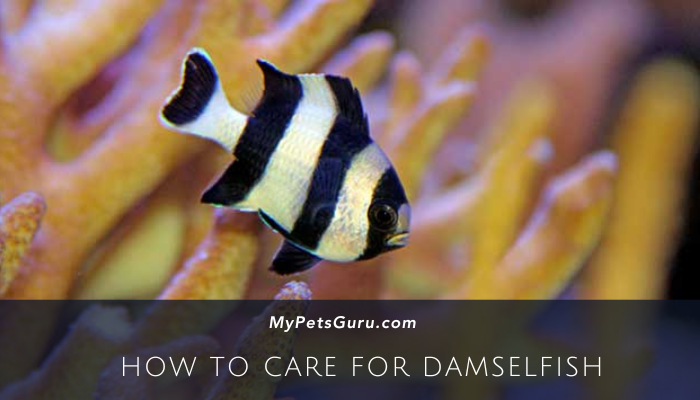- Damselfish are small, colorful fish that are commonly found in coral reefs.
- While damselfish are known to be territorial and aggressive, they typically do not eat other fish.
- Their primary diet consists of zooplankton, small crustaceans, and algae.
- Some species of damselfish may exhibit cannibalistic behavior, particularly when there is limited food availability.
- Damselfish play an important role in the ecosystem, as they help control algae growth and serve as food for larger predators.
Damselfish are fascinating creatures that inhabit the vibrant and diverse world of coral reefs. These small, colorful fish are known for their assertive nature and territorial behavior. However, many people wonder if damselfish go beyond simply defending their territory and actually eat other fish. In this article, we will explore the dietary habits of damselfish and uncover the truth behind this popular question.
The Diet of Damselfish
Damselfish are primarily herbivorous, which means they predominantly feed on plant matter. They have a varied diet that includes zooplankton, small crustaceans, and algae. Damselfish are highly adaptive and opportunistic feeders, making the most of what the reef has to offer. They have a specialized set of teeth that allow them to scrape algae off coral surfaces, making them excellent algae grazers.
Although damselfish are known to be territorial and can exhibit aggressive behavior towards intruders, they generally do not eat other fish. Their small size and limited hunting abilities make it challenging for them to capture and consume larger fish. Damselfish prefer to stick to their herbivorous diet and focus on defending their territory from potential threats. However, there are exceptions to this rule, as some species of damselfish may exhibit cannibalistic behavior, particularly when food becomes scarce.
To better understand the diet of damselfish, let’s delve into some specific examples of their feeding habits:
| Damselfish Species | Feeding Behavior |
|---|---|
| Blue Damselfish | Primarily feeds on algae and zooplankton. |
| Three-spot Damselfish | Grazes on algae from the substrate and coral surfaces. |
| Yellowtail Damselfish | Preys on small crustaceans such as amphipods and copepods. |
| Lemon Damselfish | Consumes zooplankton and feeds on small invertebrates. |
Damselfish have a fascinating way of utilizing their environment to obtain food. They often dart in and out of the reef structure, picking at algae or catching small prey. By foraging in this manner, they help control algae growth and maintain the delicate balance within the coral reef ecosystem.
While damselfish are not known for regularly consuming other fish, there are cases where they exhibit cannibalistic behavior. In certain situations, such as limited food availability or overcrowded conditions, some damselfish may turn to eating their own kind. Cannibalism among damselfish has been observed mostly in captivity or when natural food sources are scarce.
This cannibalistic behavior can be related to their aggressive nature and territorial instincts. When resources are limited, damselfish become more likely to resort to cannibalism as a means of survival. Although not a regular occurrence, this behavior highlights the adaptability and resilience of these fish in challenging conditions.
While damselfish may occasionally engage in cannibalistic behavior, it’s important to recognize their significant role in the coral reef ecosystem. These small fish serve as a vital link in the food chain, providing sustenance for larger predators. They help control algae growth by grazing on it, thus preventing it from overwhelming the reef. Additionally, damselfish create territories and aggressively defend them, contributing to the overall stability of the reef ecosystem.
By keeping algae in check, damselfish promote the growth of healthy corals and other reef organisms. Their interactions with their environment are essential for maintaining the delicate balance and biodiversity of the coral reef ecosystem.
While damselfish are territorial and may exhibit aggressive behavior towards other fish, they generally do not eat them. Their primary diet consists of zooplankton, small crustaceans, and algae. However, in certain circumstances, such as limited food availability, some species of damselfish may resort to cannibalism.
These colorful and dynamic fish play a crucial role in the coral reef ecosystem. They help control algae growth, contribute to the overall stability of the reef, and serve as an important food source for larger predators. So, the next time you dive into the magical world of coral reefs, keep an eye out for these fascinating damselfish and appreciate their vital role in maintaining the health and harmony of the reef. Happy diving!

Hi, I’m Lila Hart, and I’m just as fish-obsessed as they come! I’ve been enamored with aquatic life since I was a little kid. Now, I’m a marine biologist with over 3 years of hands-on experience in the world of pet fish.
I’ve learned the ropes of fishkeeping through trial and error, and I’m excited to share my knowledge with you. My mission is to help you create a thriving aquatic paradise for your finned companions. Together, we’ll explore the fascinating underwater world of pet fish!

